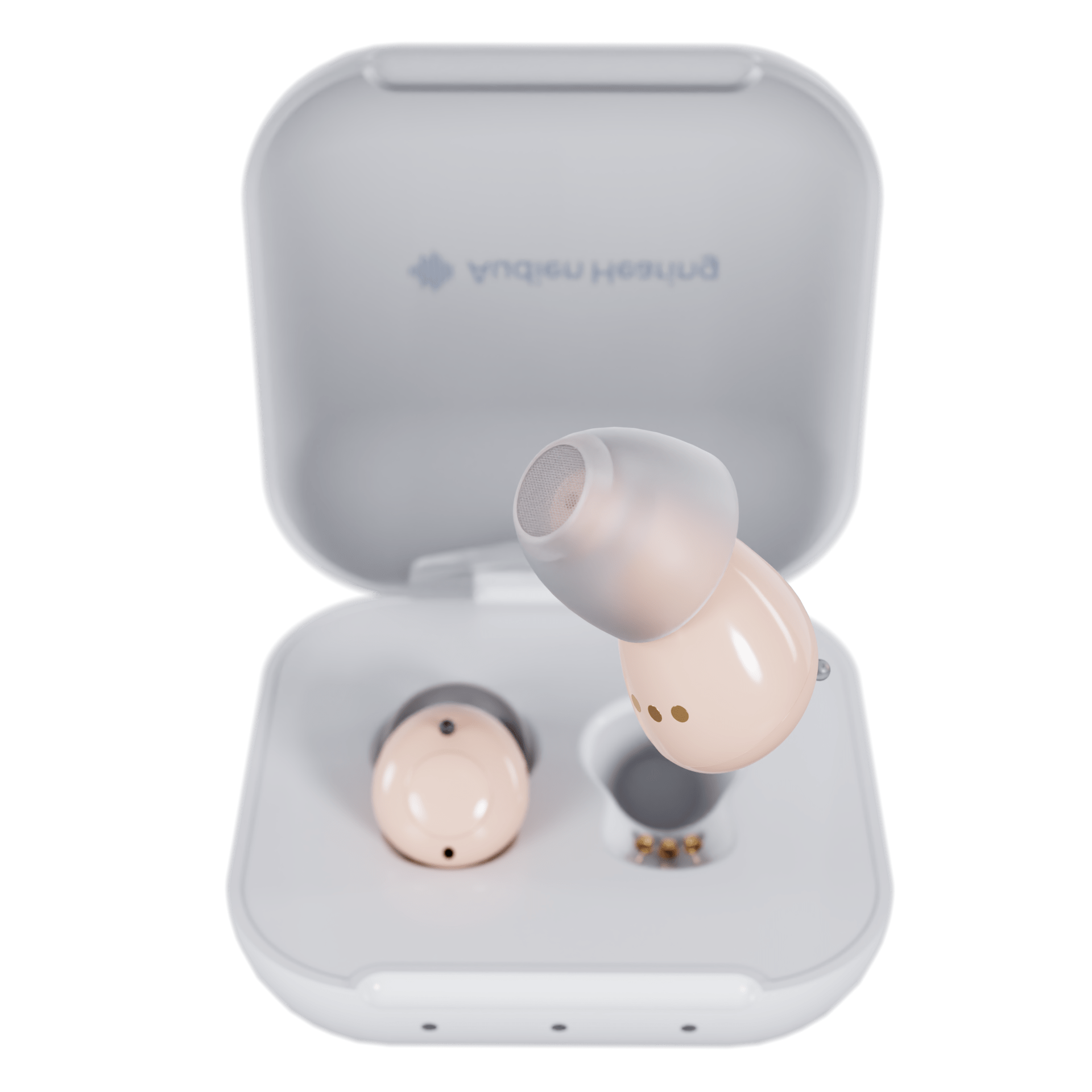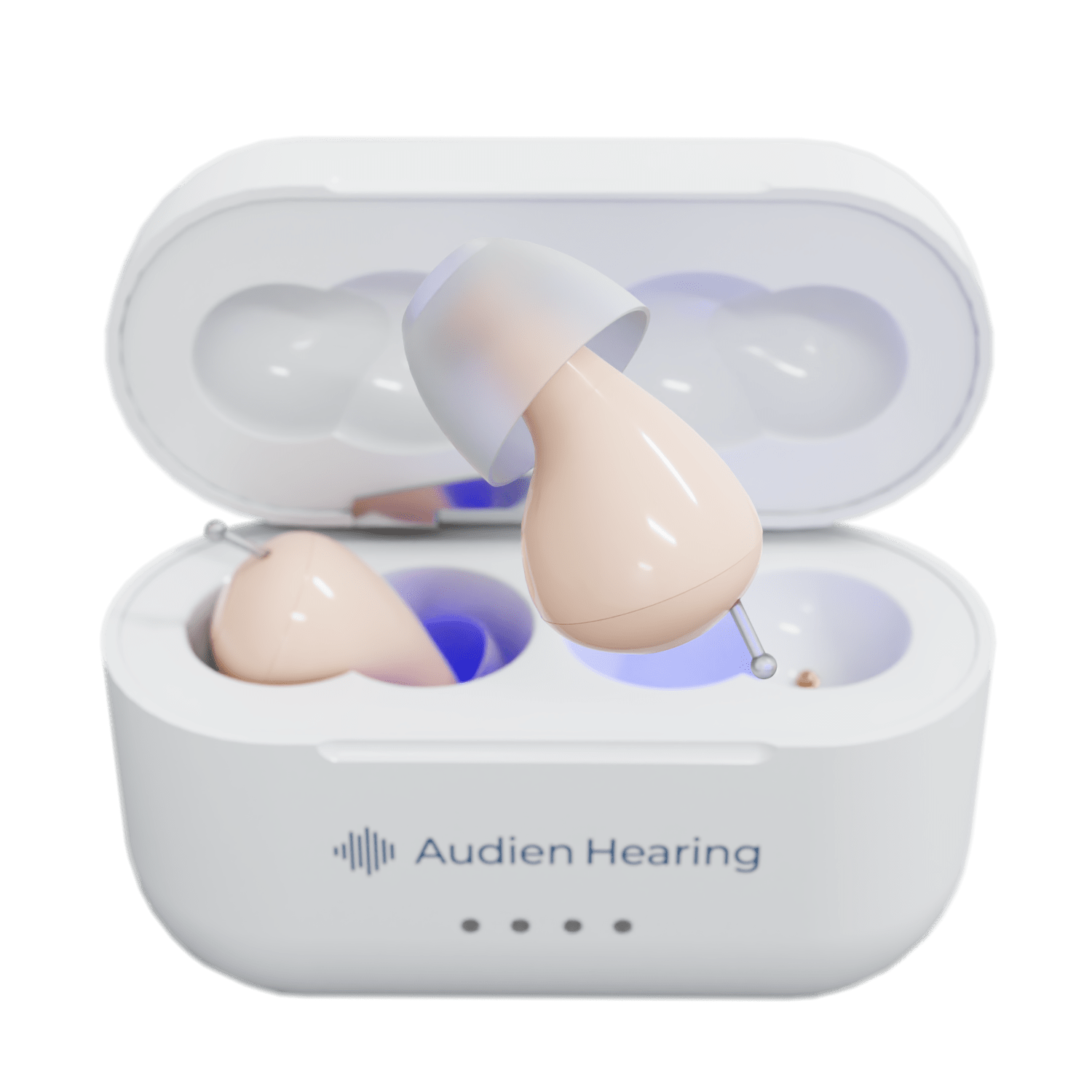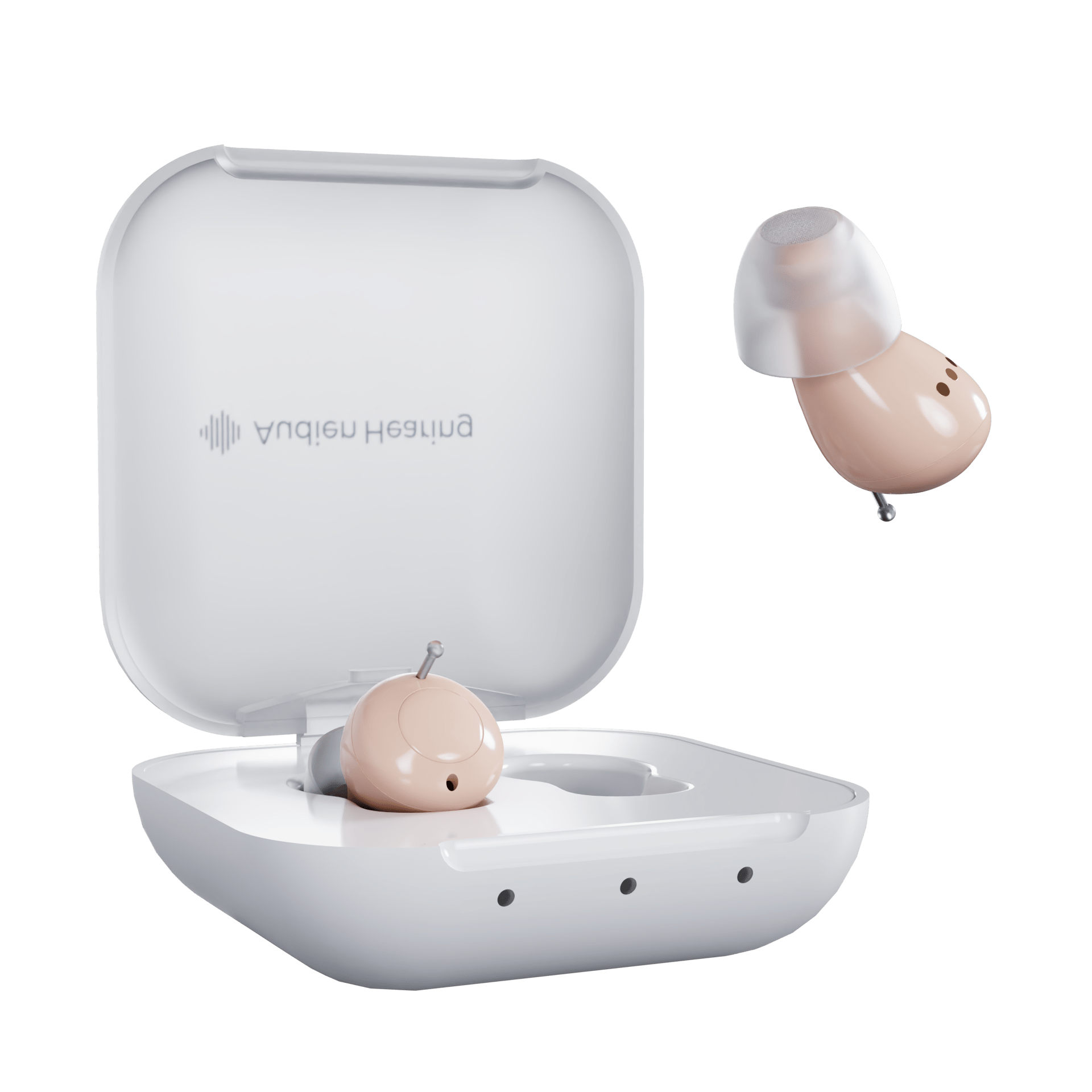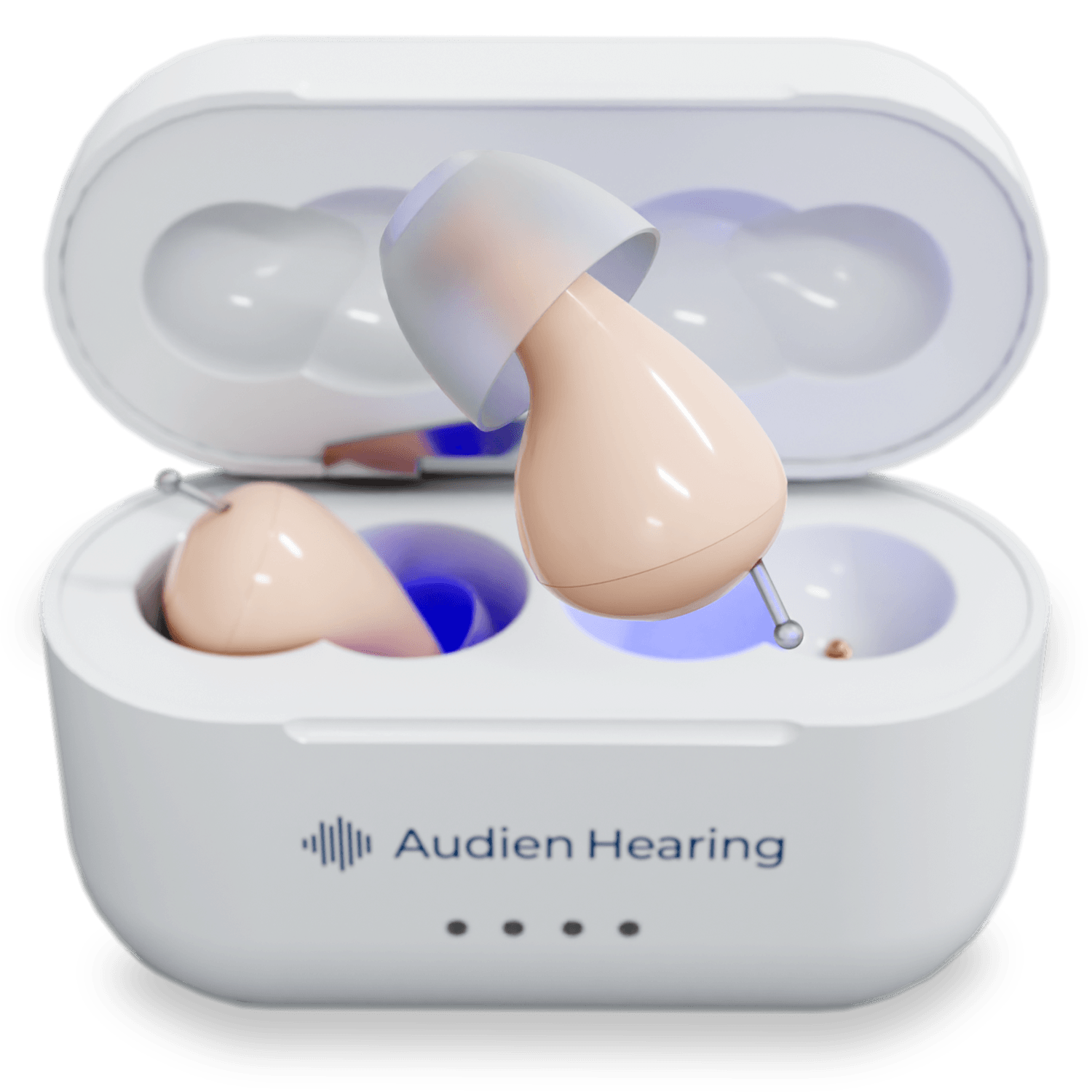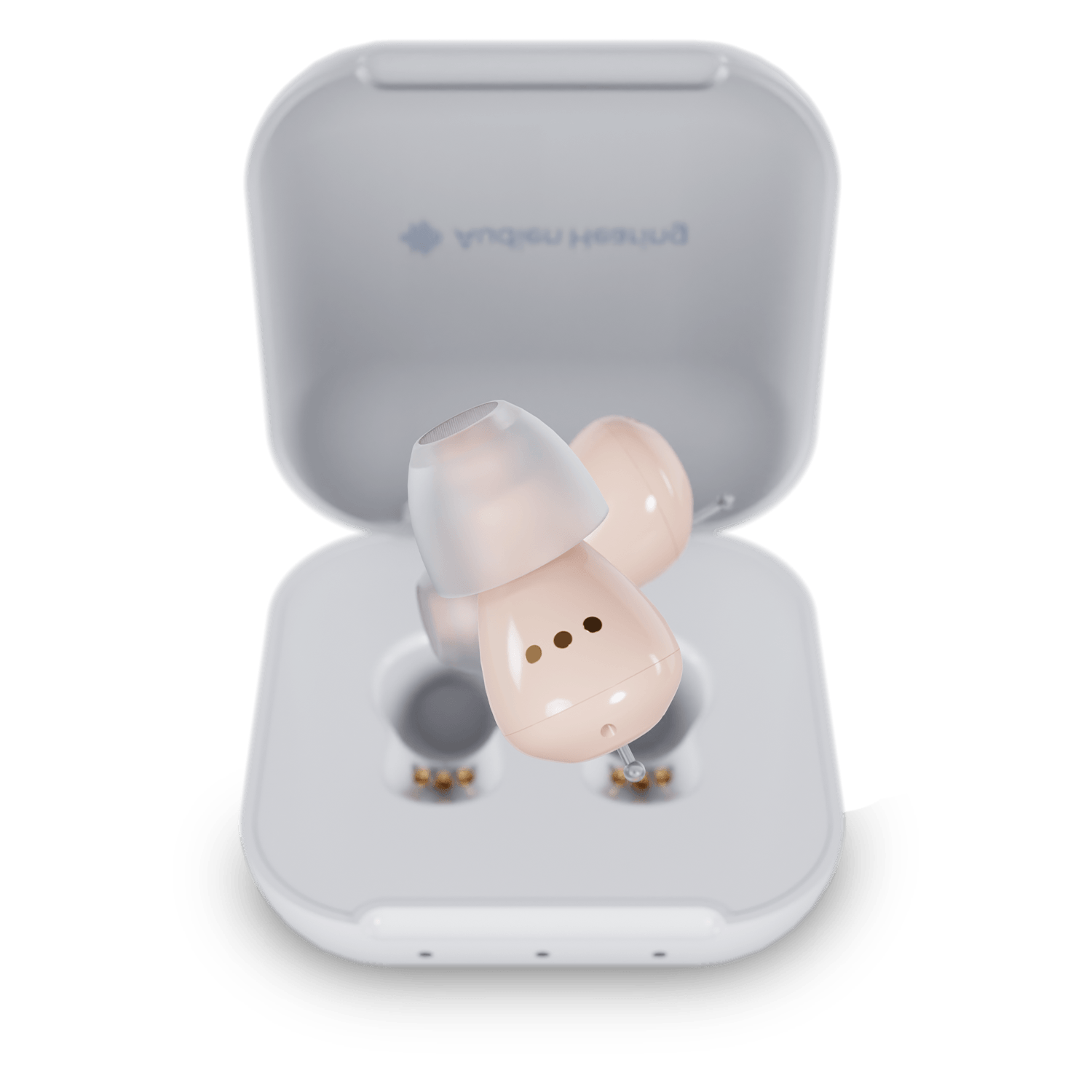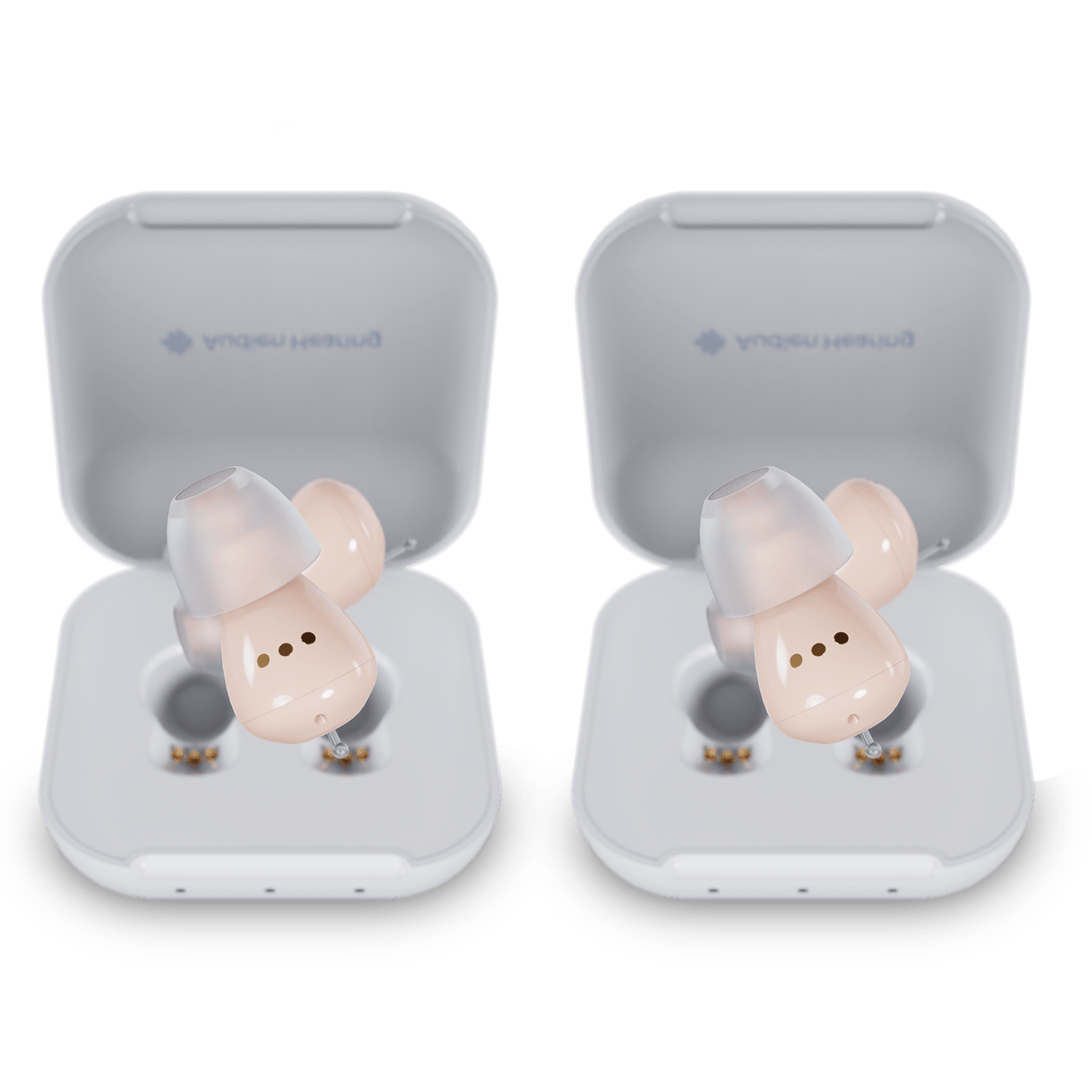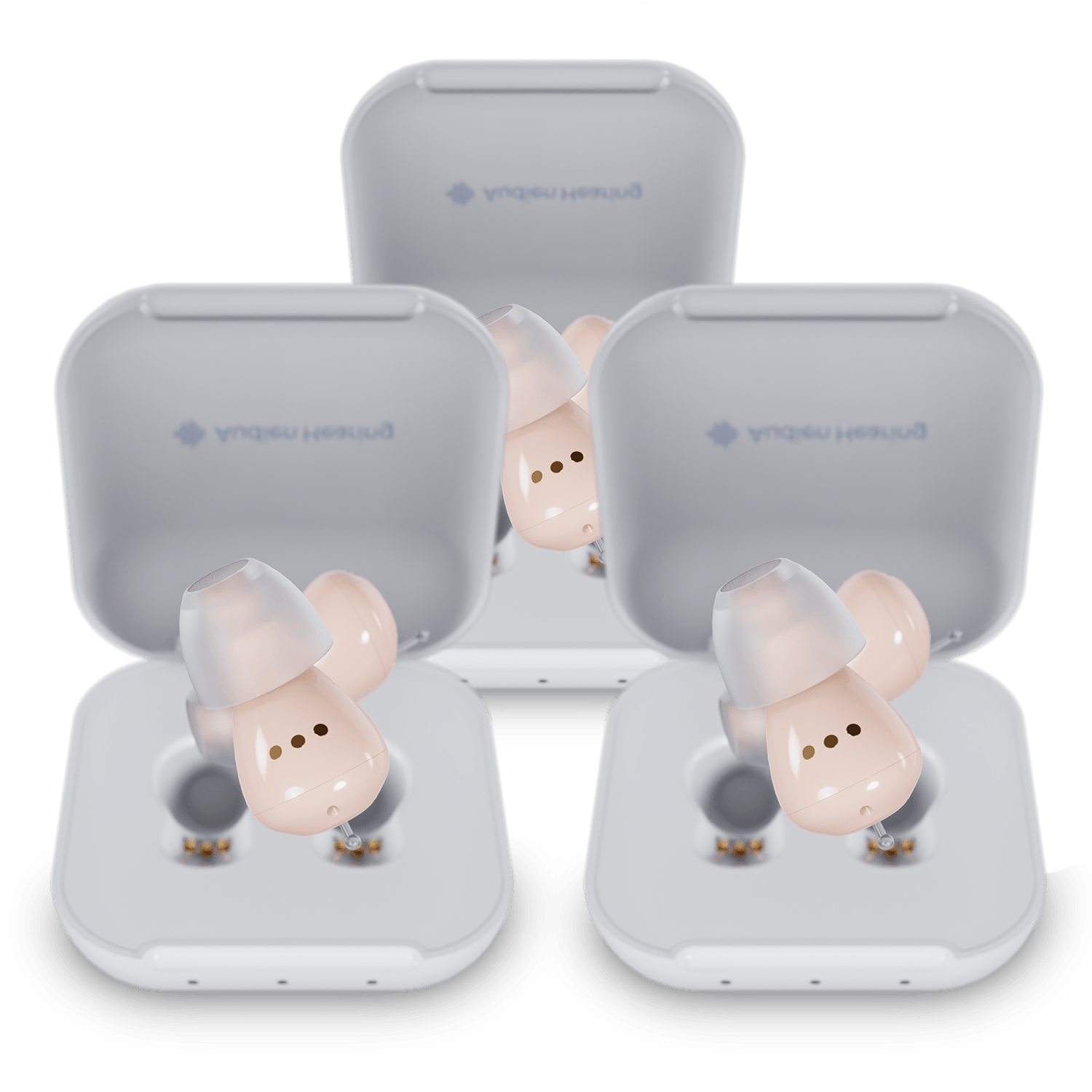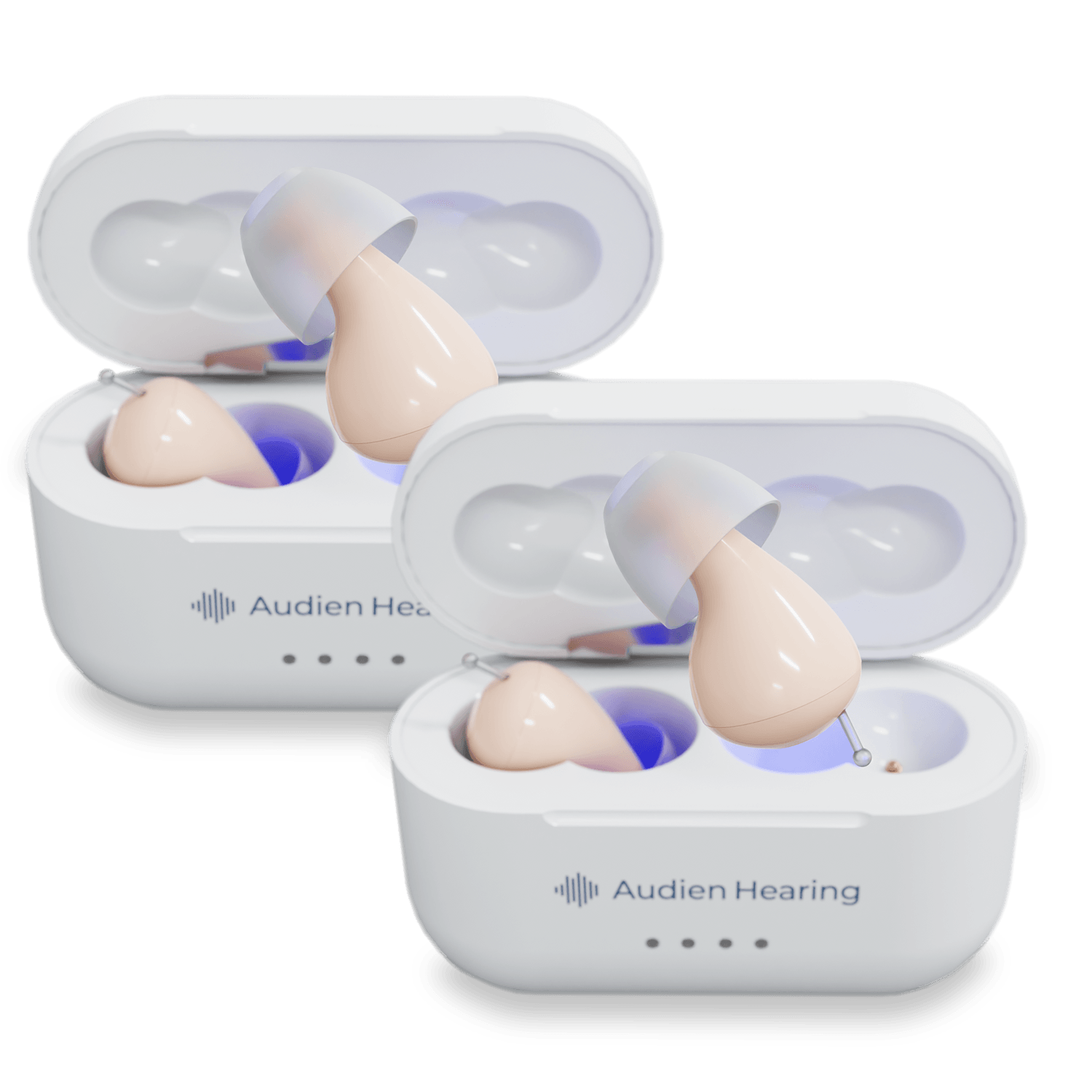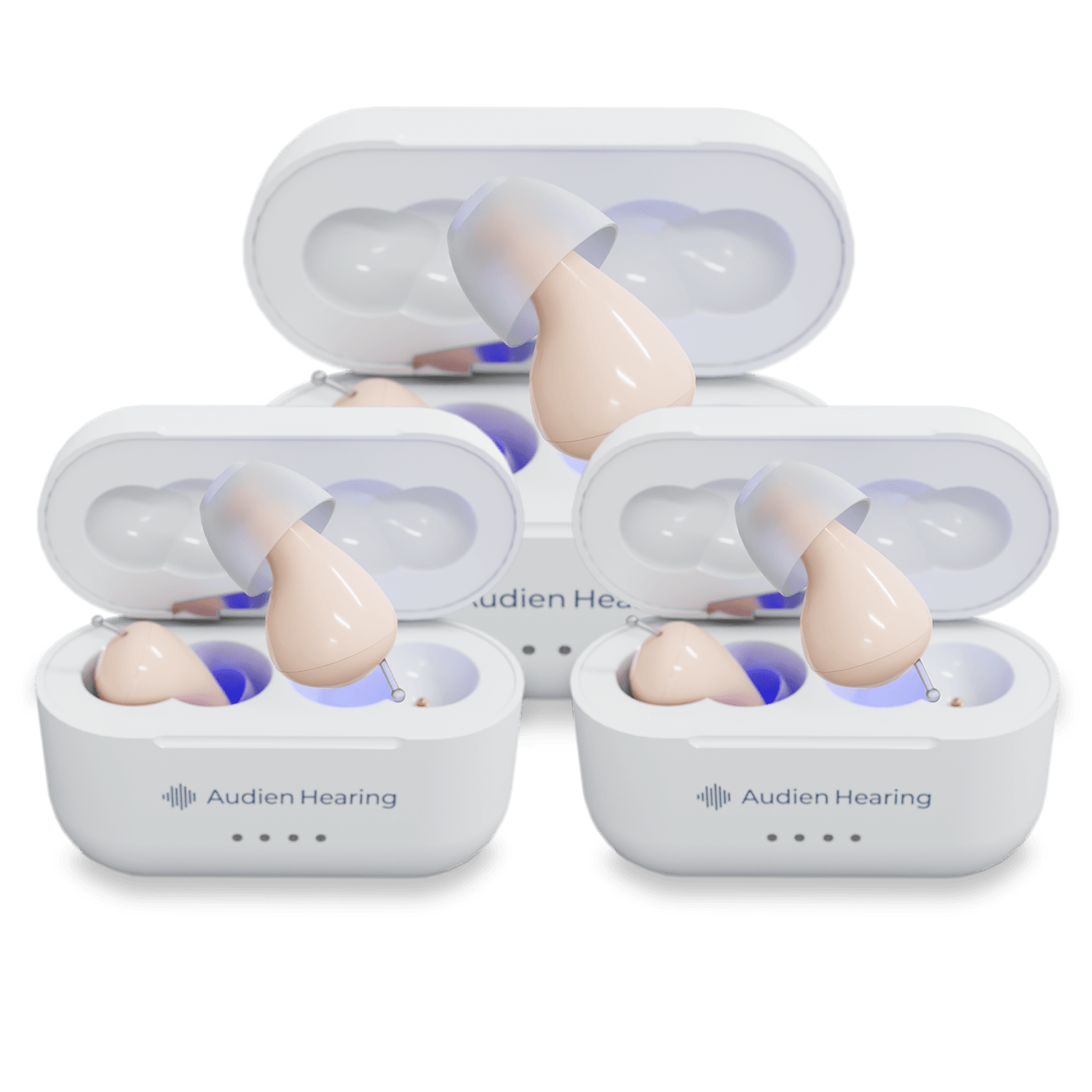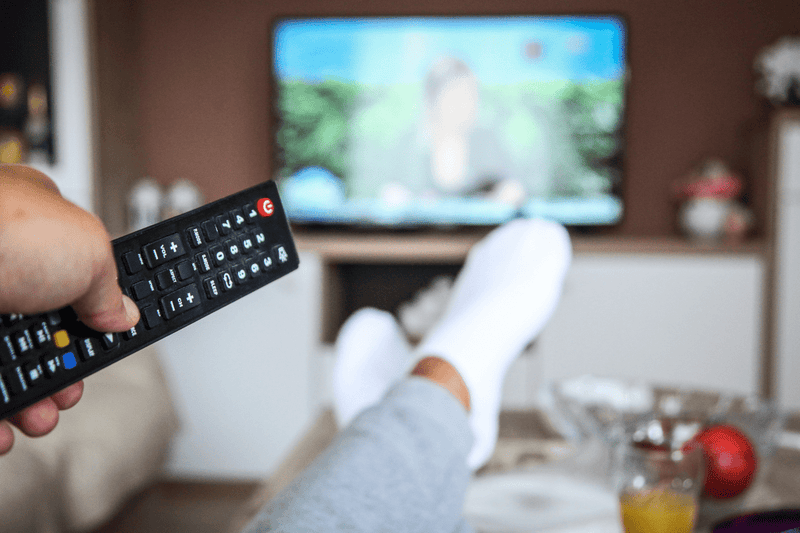You finally got hearing aids. You were looking forward to watching TV without subtitles, without your spouse complaining about the volume, without missing crucial plot points.
But here you are, still struggling to understand dialogue while the background music booms. You catch every explosion, every dramatic music swell, but somehow the detective's crucial revelation remains a mystery. As an audiologist, I can tell you this is one of the most common frustrations I hear. The good news? It's usually fixable once you understand what's happening.

The TV Audio Problem Nobody Talks About
Modern TV audio is mixed for people with perfect hearing wearing high-end sound systems. Directors assume you have surround sound. They bury dialogue under dramatic music and sound effects because it creates "atmosphere." The actor's whispered confession that drives the entire plot? It's competing with orchestral swells and ambient noise.
This isn't your imagination. Sound engineers call it the "dynamic range" problem. The difference between the quietest dialogue and the loudest explosion has gotten extreme. Your hearing aids are faithfully reproducing this poor audio mix, which is why explosions hurt your ears while conversations remain mumbled.
Add to this the fact that many actors don't enunciate like they used to. The era of clear theatrical speech is gone, replaced by naturalistic mumbling that sounds realistic but is murder on comprehension. When Benedict Cumberbatch whispers his deductions or when action stars growl their one-liners through gritted teeth, even people with normal hearing reach for subtitles.

Why Hearing Aids Alone Aren't Always Enough
Your hearing aids are sophisticated, but they can't perform magic. They're trying to clarify speech that's already muddled in the source material. It's like trying to read a book through foggy glasses—cleaning your glasses helps, but it doesn't fix the smudged print.
Here's what your hearing aids are up against:
-
TV speakers that point down or backward instead of at you
-
Room acoustics that create echo and reverb
-
Background music mixed louder than dialogue
-
Sound effects that mask speech frequencies
-
Compressed audio that reduces clarity
Even the most advanced hearing aids struggle when the original sound quality is poor. They can't separate dialogue from background music if the TV itself isn't doing that separation. It's not failure; it's physics.
The Living Room Battle That Tears Families Apart

Let's address the elephant in the room: the volume wars. You need it louder to understand. Your spouse's ears are bleeding. You've tried compromising at a middle volume that satisfies no one. Everyone's frustrated, and movie night has become a tense night.
This dynamic destroys the simple pleasure of watching TV together. One spouse retreats to another room. Couples stop sharing shows they used to enjoy. The person with hearing loss feels guilty and isolated. The other feels resentful and unheard. Over something as simple as television volume.
I've seen marriages strained by this nightly battle. "We used to love our evening shows," one woman told me, tears in her eyes. "Now we watch separately. It's lonely." Her husband nodded, equally miserable. They'd let TV volume divide them for three years before seeking help.
Settings That Actually Help
Most people never move beyond their hearing aids' default settings, missing features specifically designed for TV watching. Let's fix that.
If you have the Audien Ion Pro, you have different environmental hearing modes. One is specifically optimized for TV watching. This setting enhances speech frequencies while reducing background noise. It's like having a sound engineer in your ear, constantly adjusting the mix for clarity. The difference can be dramatic—suddenly, those mumbled conversations become intelligible.
The Atom 2 series also offers hearing modes. Switch to the TV setting before you settle in to watch. This mode boosts the frequencies where speech lives while taming the bass that makes action scenes overwhelming.
But here's the key: you need to activate these settings before you start watching, not after you're already frustrated. Make it part of your routine. Grab the remote, switch your hearing aids to TV mode, then start your show. It takes two seconds and changes everything.
The Distance Dilemma

Sound loses clarity over distance. Every foot between you and the TV degrades the speech signal while room noise remains constant. If you're sitting 10 feet from your TV, your hearing aids are working overtime to pull clear speech from a muddy mix.
Think about the last time you struggled to hear someone across a noisy room. Now imagine that person is also whispering while an orchestra plays. That's what your hearing aids face with TV audio from across the living room.
The solution isn't sitting uncomfortably close. It's bringing the sound to you. The Ion Pro's Bluetooth capability is a game-changer here. When you stream audio directly to your hearing aids, you eliminate:
-
Room acoustics
-
Distance degradation
-
Competing noise
-
Echo and reverb
The sound goes straight from the TV to your ears, clear and clean. No more battles with poor TV speakers or room acoustics. It's like having headphones custom-tuned for your hearing loss.
Simple Fixes That Make a Big Difference
Before you blame your hearing aids, try these adjustments:
TV Audio Settings: Modern TVs have audio options buried in menus most people never explore. Look for:
-
"Clear Voice" or "Dialogue Enhancement" settings (game-changing when activated)
-
"Night Mode" that reduces dynamic range
-
Audio output set to "Stereo" not "Surround"
-
Bass reduced, treble slightly increased
One patient called me ecstatic: "I found something called 'Clear Voice' in my TV settings. It's like someone lifted a blanket off the speakers!"
Room Adjustments:
-
Add soft furniture or rugs to reduce echo
-
Position yourself directly in front of the TV
-
Close doors to reduce ambient noise
-
Turn off ceiling fans and other noise sources
Viewing Habits:
-
Use TV mode on your hearing aids consistently
-
Start with volume lower than you think you need
-
Give your brain adjustment time with new shows
-
Consider closed captions as backup, not primary
When Technology Is the Answer

Sometimes, the best solution is adding technology designed specifically for TV audio. If your hearing aids don't have Bluetooth (or if you want an even better solution), consider:
TV Streamers: These devices connect to your TV and send audio directly to your hearing aids. Audien's Ion Pro works with standard Bluetooth transmitters, creating your own private sound system. Your spouse can set their comfortable volume while you hear clearly through your hearing aids.
Sound Bars: A good sound bar with dialogue enhancement does wonders. It projects sound toward you and often includes speech-boosting technology. Combined with proper hearing aid settings, this can transform your TV experience.
The Streaming Revolution
If you haven't explored streaming audio directly to your hearing aids, you're missing out on the closest thing to TV audio magic. The Ion Pro's Bluetooth capability doesn't just help—it transforms TV watching. Here's why:
-
No more volume battles with family (they hear through TV, you through hearing aids)
-
Crystal-clear dialogue without disturbing others
-
Background noise in your room becomes irrelevant
-
You can sit anywhere and hear perfectly
Setting it up is simpler than programming your remote. Most smart TVs have Bluetooth built in. Pair your Ion Pro like you would any Bluetooth device, and suddenly you have a private theater experience. The first time you experience it, you'll wonder how you watched TV any other way.
Making Peace with Subtitles

Here's something I tell all my patients: using subtitles isn't admitting defeat. It's using all available tools. Many people with perfect hearing use subtitles for complex shows. When you combine properly set hearing aids with subtitles as backup, you miss nothing and stress less.
The key is using subtitles strategically, not constantly. They're perfect for:
-
Shows with heavy accents
-
Content with poor audio mixing
-
When you're tired and processing is harder
-
Complex plots where missing one word matters
One couple found subtitles actually brought them together. "We both read them now," the husband said. "It's become our thing. We pause to discuss plot points we might have missed. TV is interactive again."
Your Action Plan for Tonight
Starting tonight, reclaim your TV enjoyment:
-
Find and use your TV mode. Whether it's the Ion Pro's dedicated profile or the Atom 2's TV setting, activate it before watching.
-
Check your TV's audio settings. Spend 5 minutes exploring. Look for any "voice" or "dialogue" options.
-
Experiment with positioning. Try different seating distances and angles.
-
If you have Bluetooth capability, set it up. Tonight. The 20 minutes of setup pays dividends forever.
-
Test with different content. Start with news (clearest audio) then work up to your challenging shows.
The Transformation Waiting for You

When everything clicks—proper hearing aid settings, optimized TV audio, maybe streaming capability—the change is profound. Dialogue becomes clear. You stop asking "What did they say?" Your spouse stops wincing at the volume. TV becomes a shared pleasure again, not a source of conflict.
Couples tell me that fixing their TV audio issues improved their entire relationship. Evening tension disappeared. They started looking forward to their shows together again. Such a small thing, TV audio, but it represents hours of daily interaction.
Your hearing aids are capable of delivering clear TV audio. Between the Ion Pro's six specialized profiles for optimal customization - along with the environmental modes built into both the Ion and Atom series - the technology exists. You just need to activate it, optimize your setup, and possibly embrace solutions like Bluetooth streaming.
Don't spend another evening straining through missed dialogue or fighting about volume. Use the tools available, adjust your environment, and remember that struggling isn't noble—it's unnecessary. With the right approach, you can stop pretending you heard the plot twist and start actually enjoying the show.
The solution exists. Tonight can be different. Your hearing aids, properly configured, can deliver the TV experience you've been missing. And with Audien's lifetime support, help is always available if you need guidance setting up your perfect TV solution.
